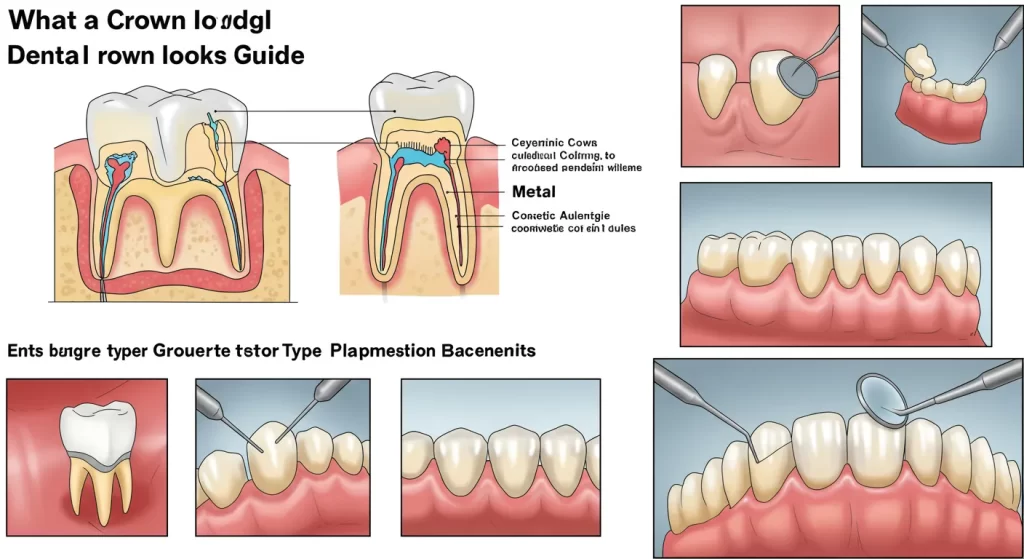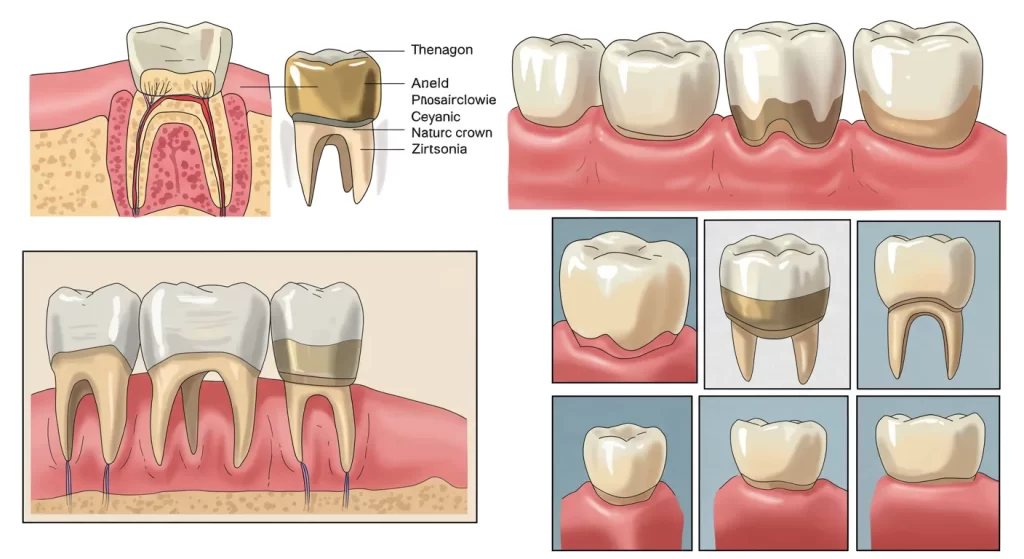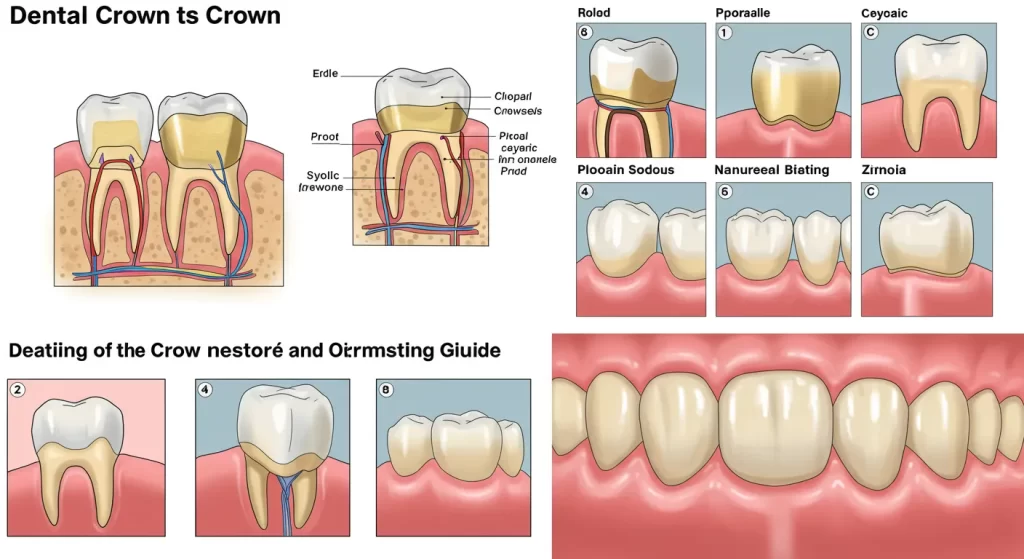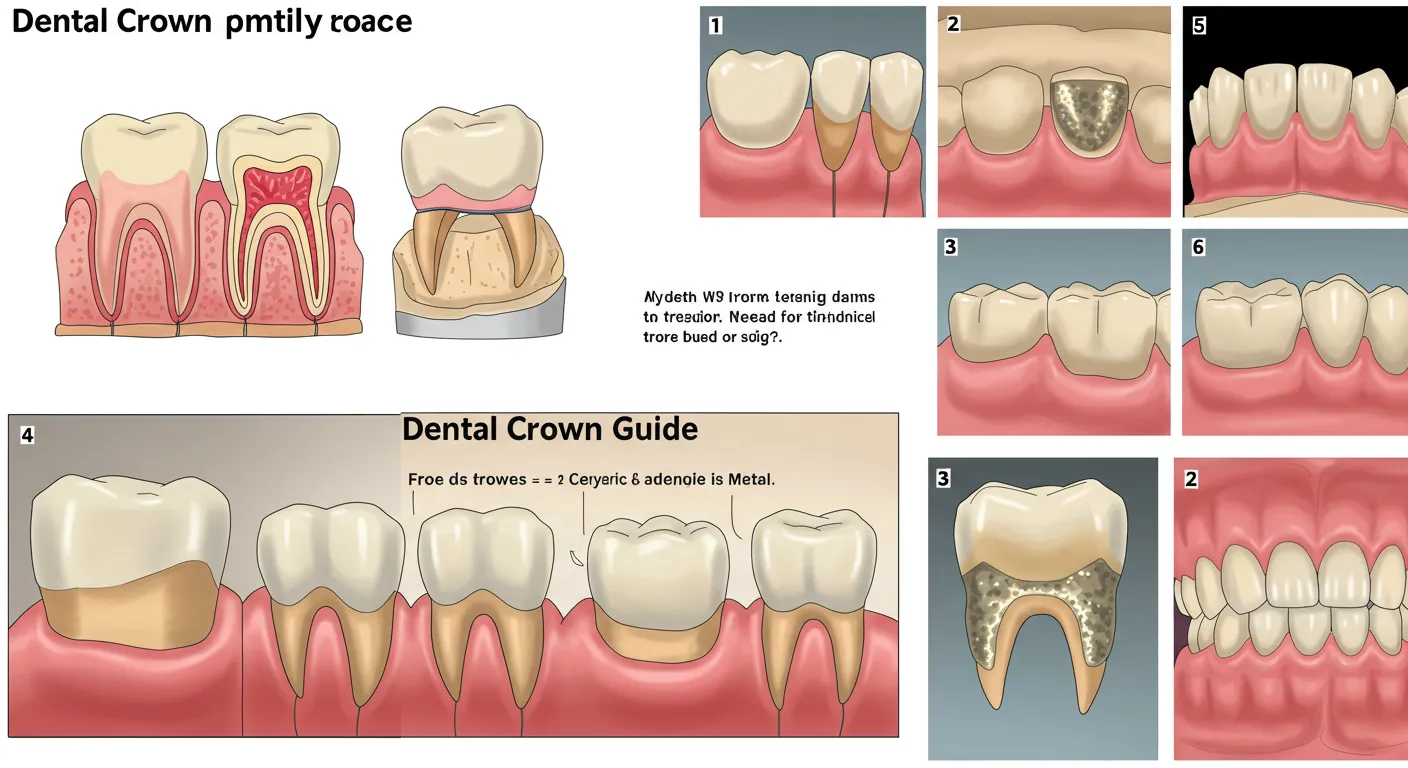Table of Contents
A what does a dental crown look like is a common query for those interested in understanding how these restorative dental devices appear and function. A dental crown is essentially a tooth-shaped lid placed over a damaged or weakened tooth to restore its shape, size, strength, and appearance. It fully encases the visual part of the tooth above the gum line, much like a snug hat, designed to blend seamlessly with your natural teeth.
The Shape and Structure of Dental Crowns
Dental crowns are custom-made to mimic the natural shape of teeth. Typically, they are wider at the chewing surface and taper down to a narrower base near the gumline. This shape is carefully crafted to match the specific tooth being restored, ensuring both comfort and functionality. The crown’s design allows it to fit snugly over the prepared natural tooth, protecting it while restoring its original form.
Materials That Define the Appearance

The look of a dental crown varies significantly depending on the materials used. Common materials include porcelain, ceramic, metal alloys (such as gold or silver), resin, and combinations like porcelain fused to metal. Porcelain and ceramic crowns are selected for their ability to closely resemble natural teeth, offering translucency and color variations that mimic real enamel.
Metal crowns, while extremely durable, have a metallic shine and do not look like natural teeth, but are often used on molars where strength is prioritized over aesthetics. Porcelain-fused-to-metal crowns combine the power of metal with the natural look of porcelain, but may show a dark line near the gumline over time.
Also Read: What Not to Say in Child Custody Mediation: Key Tips
Color and Texture: Blending with Natural Teeth
One of the key aspects of a dental crown look is its color matching. Crowns can be precisely color-matched to adjacent teeth, making them almost indistinguishable. Porcelain and ceramic crowns are polished to a smooth finish that replicates the texture of natural teeth, ensuring a comfortable feel and natural appearance. This customization grows to the size and shape, tailored to fit perfectly with the patient’s bite and gumline, enhancing both function and aesthetics.
How Crowns Are Customized for Each Patient
Customization is critical in achieving a natural dental crown look. Dentists take images or digital scans of the patient’s teeth to create a crown that fits perfectly. This process ensures that the crown matches the patient’s bite and aligns well with surrounding teeth. The goal is to make the crown look and feel like a natural part of the mouth, restoring confidence in the smile and improving oral health.
Different Types of Crowns and Their Visual Impact

- Porcelain/Ceramic Crowns: These are best for front teeth due to their realistic appearance and ability to blend with surrounding teeth.
- Metal Crowns: Durable but visually distinct, often used on back teeth.
- Porcelain-Fused-to-Metal Crowns: A balance of strength and aesthetics, though sometimes a dark gumline may be visible.
- Resin Crowns: Less durable but can be color-matched for a natural look.
- Pressed Ceramic Crowns: Similar to porcelain crowns, they have a strong inner core for durability and natural appearance.
The Role of Technology in Enhancing Appearance
Modern dental technology, including CAD/CAM (computer-aided design and manufacturing), allows crowns to be designed with incredible precision.
This technology helps in crafting crowns that fit better and look more natural than ever before. Digital imaging and 3D printing contribute to faster production times and improved customization, making the dental crown look more lifelike and comfortable for the patient.
Common Questions About the Appearance of Dental Crowns
Many patients wonder if dental crowns look artificial or noticeable. Thanks to advances in materials and techniques, most crowns are virtually indistinguishable from natural teeth. The key is proper shade matching and professional fitting. Crowns can be made to suit the patient’s smile perfectly, whether for a single tooth or multiple restorations.
Caring for Your Crown to Maintain Its Appearance
To keep a dental crown looking natural, good oral hygiene is essential. Touching, flossing, and regular dental check-ups help maintain the crown’s appearance and prevent issues like gum recession or staining around the edges. Avoiding excessive force or hard foods can also prolong the crown’s lifespan and keep it looking its best.
How Crowns Affect Your Smile and Confidence

A well-crafted dental crown can significantly improve the appearance of your smile. By restoring damaged teeth, crowns help maintain the natural alignment and aesthetics of your teeth. This not only boosts oral function but also enhances self-confidence, making you more comfortable in social and professional settings.
When to Consult a Dentist About Dental Crowns
If you have a damaged, cracked, or heavily decayed tooth, or if you want to improve the look of a distorted or discolored tooth, consulting a dentist about dental crowns is a great step. A skilled can guide you through the options, show you examples of dental crown looks, and help you choose the best material and style for your needs.
Final Thoughts
What a dental crown looks like involves appreciating its shape, material, color, and customization. These tooth-shaped caps are designed to restore and protect teeth while blending naturally with your smile.
Whether made from porcelain, metal, or a combination, dental crowns today offer both durability and aesthetics. If you’re considering a crown, consulting with a dental professional will ensure you get a restoration that looks natural and feels comfortable, helping you maintain a healthy, confident smile.
If you want to explore more about dental crowns and see how they could enhance your smile, reach out to your regional dental clinic for personalized advice and before-and-after images. Your perfect dental crown awaits!
FAQs
Do dental crowns look natural?
Yes, modern crowns are designed to closely match your natural teeth in color and shape for a seamless, natural appearance.
How long does a dental crown last?
With proper care, dental crowns can last 10-15 years or longer before needing replacement.
Can I tell if someone has a dental crown?
Usually not, especially with porcelain or ceramic crowns that blend well with natural teeth.

